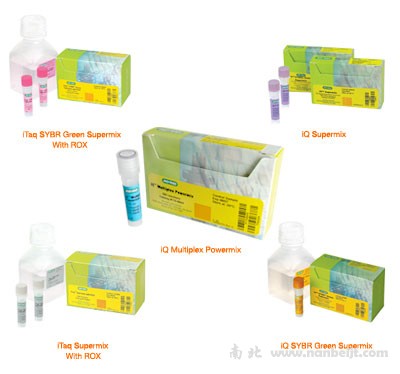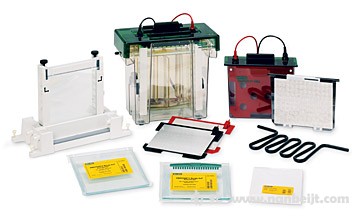-
- 数显式推拉力计 电力仪器 气溶胶喷雾器 屏蔽箱 口腔内窥镜 封口机 血沉分析仪 血凝仪 金相试样设备 零顶空提取器 底泥采样器(抓斗式) 多功能校准仪 大型岩土仪器设备 电子酒柜 光伏水泵 防爆灯具 全自动营养盐分析仪 张力仪 测试架 测试台 NK指针式推拉力计 矿井勘探设备 地质勘探设备 地下金属探测器 手持式金属探测器 细菌内毒素检测恒温仪 环氧乙烷灭菌箱 毒品探测器 生命探测仪 雷达测速仪 鄂式破碎机 翻转式振荡器 激光测距仪 造纸仪器 熔蜡机 注射泵 气象仪器 中药机械 绝缘油介电强度测试仪 绝缘油体积电阻率测定仪 全自动脱气振荡仪 转鼓机 马弗炉 翻转式萃取器 翻转式萃取器 降水降尘自动采样器 刻字机 全自动翻转式振荡器 无线冷链温度监控仪 胰岛素冷藏盒 看谱镜 车载冷藏箱 生物制剂冷藏箱 干冰式冷藏箱
-
- 土壤研磨与筛分器 农业气象监测仪 土壤综合仪器 土壤酸度计 土壤原位盐度计 土壤墒情速测仪 土壤紧实度仪 墒情检测仪器 温湿度记录仪 人工气候室 传感器/变送器 记录仪 土壤水分记录仪 土壤温度记录仪 土壤水分测定仪 土壤水势测定仪 土壤养分速测仪 GPS土地面积测量仪 雨量记录仪 风向风速记录仪 二氧化碳记录仪 海拔仪 农业环境检测仪 面包体积测定仪 化肥快速分析仪 农药残留速测仪 土肥速测仪 脂肪测定仪 蛋白质测定仪 食品检测仪 农产品检测仪 水质检测仪 肉质检测仪 重金属检测系统 牛奶分析仪 饮用酒检测仪 水活度仪 质构仪 氧化分析仪 纤维测定仪 氮磷钙测定仪 土壤采样器 土壤硬度计 黄曲霉毒素检测仪 叶绿素计 气孔计 茎流计 蒸汽灭菌器
-
- 石油油品仪器 粘度计 扭簧测力计 液体密度计 中压滤失仪 高温高压滤失仪 膨胀量测定仪 泥饼粘附系数测定仪 解卡液分析仪 极压润滑仪 钻井液润滑性分析仪 浮筒切力计 搅拌机 配浆机 钻井液固相含量测定仪 钻井液含砂量测定仪 湿筛仪 钻井液酸度计 钻井液电阻率测定仪 硫化物含量测定仪 钻井液电稳定性测定仪 搬土含量测定仪 气源装置 现场仪器配套箱 压力机 滚子加热炉 堵漏材料试验装置 稠化仪 高温高压养护釜 常压养护箱 水泥浆静态滤失仪 石油仪器 公路仪器 地质仪器 陈化釜 常压稠化仪 进口工具 高压管汇 电稳定性测试仪 油水(液固)分离装置 石油离心机 钻井液润滑分析仪 油品分析测量仪器 沥青类检测仪器 润滑油氧化安定性测定仪 绝缘油析气性测定仪 颗粒计数器 汽轮机油酸值自动测定仪 闭口闪点自动测定仪 凝(倾)点自动测定仪 破/抗乳化测定仪 润滑油空气释放值测定仪
-
- 水泥试验设备 磨房试验设备 回弹仪 混凝土砼设备 水泥分析仪器 砂浆检测设备 钢筋检测仪 裂缝检测仪 水泥养护设箱 水泥细度负压筛析仪 水泥胶砂搅拌机 水泥胶砂振动台 水泥净浆搅拌机 雷氏夹测定仪 水泥标准稠度及凝结时间测定 水泥胶砂振实台 电动抗折试验机 水泥胶砂流动度测定仪 水泥抗折试验机 水泥胶砂抗折试验机 振动磨 水泥快速养护箱 量水器 振动台 混凝土抗渗仪 混凝土试验用振动台 混凝土拌合物含气量测定仪 混凝土拌合物维勃稠度仪 抗渗仪 混凝土抗拔仪(钢筋握裹力试验) 混凝土拌合物含气量测定仪 砼泌水仪 石子压碎值测定仪 补偿混凝土收缩膨胀仪 混凝土抗压试模 砼弹性模量仪 砼收缩膨胀仪 手动混凝土贯入阻力测定仪 砂浆稠度仪 砂浆密度仪 砂浆凝结时间测定仪 砂当量试验仪 数显语音回弹仪 机械回弹仪 回弹仪检定器 数显碳化深度尺 多功能强度检测仪 隔热材料粘结强度检测仪 钢筋拉拔仪 饰面砖粘结强度检测仪 混凝土钢筋检测仪 楼板测厚检测仪 钢筋锈蚀检测仪 裂缝测深检测仪 基桩完整性测试 非金属超声检测仪 静态变形模量测试仪 动态变形模量测试仪 钢筋保护层测定仪 气囊式容积测定仪 混凝土含气量测定仪 抗折,抗压试验机
-
- 流量开关 照度测试仪 网络寻线仪 电阻测试仪 交流电压测量表 绝缘表 人体温度测试仪 汽车类万用表 力学测试台 风速测试仪 压力计 综合性仪器 转速表 温度计 湿度计 激光水平仪 LED测试仪器 黑体辐射源 红外热像仪 温度记录仪 色温计 热力学仪器 菌落计数仪 控温仪 振实仪 气体流量计 电阻率仪 专业汽车电流测试器 转速计 视频仪 数字示波万用表 温湿度测试仪 木材湿度测试仪 建筑材料湿度测试仪 噪音测试仪 气压测试仪 交直流钳型表 震动数据记录器 光电悬浮物污泥浓度计 校准及计量仪器 测试仪表 通用仪表 GPS功分器/偏置器 低噪声放大器 全数字光度计 光源测量仪器 稳压电源 电压/电位测量仪 高斯计 电化学仪表 动力学仪器 液体/表面化学 物理仪器 电磁学仪器 力学测试架

bio-rad伯乐 170-3716,170-3718 FIGE Mapper倒转场系统
 询价/订购热线:400-098-6966 0371-60153588
询价/订购热线:400-098-6966 0371-60153588
| 序列号:170-3716,170-3718 |
相关分类
相关产品

Bio-Rad伯乐 DNA Engine Opticon 2 双通道实时定量PCR仪
市场价: 请询价

市场价: 请询价

市场价: 请询价

市场价: 请询价

bio-rad伯乐 PROTEAN II Ready Gel 预制胶系统
市场价: 请询价

bio-rad伯乐 PROTEAN II xi 和XL 电泳槽配件
市场价: 请询价
河南仪器网-仪器设备行业产品集成供应平台豫ICP备08101370号-33 Copyright 2010 henan17.com Inc All Rights Reserved. 产品直线:0371-60153599,60153588,60157797,60153566,60310701 全球24小时采购热线:400 098 6966 客服邮箱:zznbgs@163.com |







